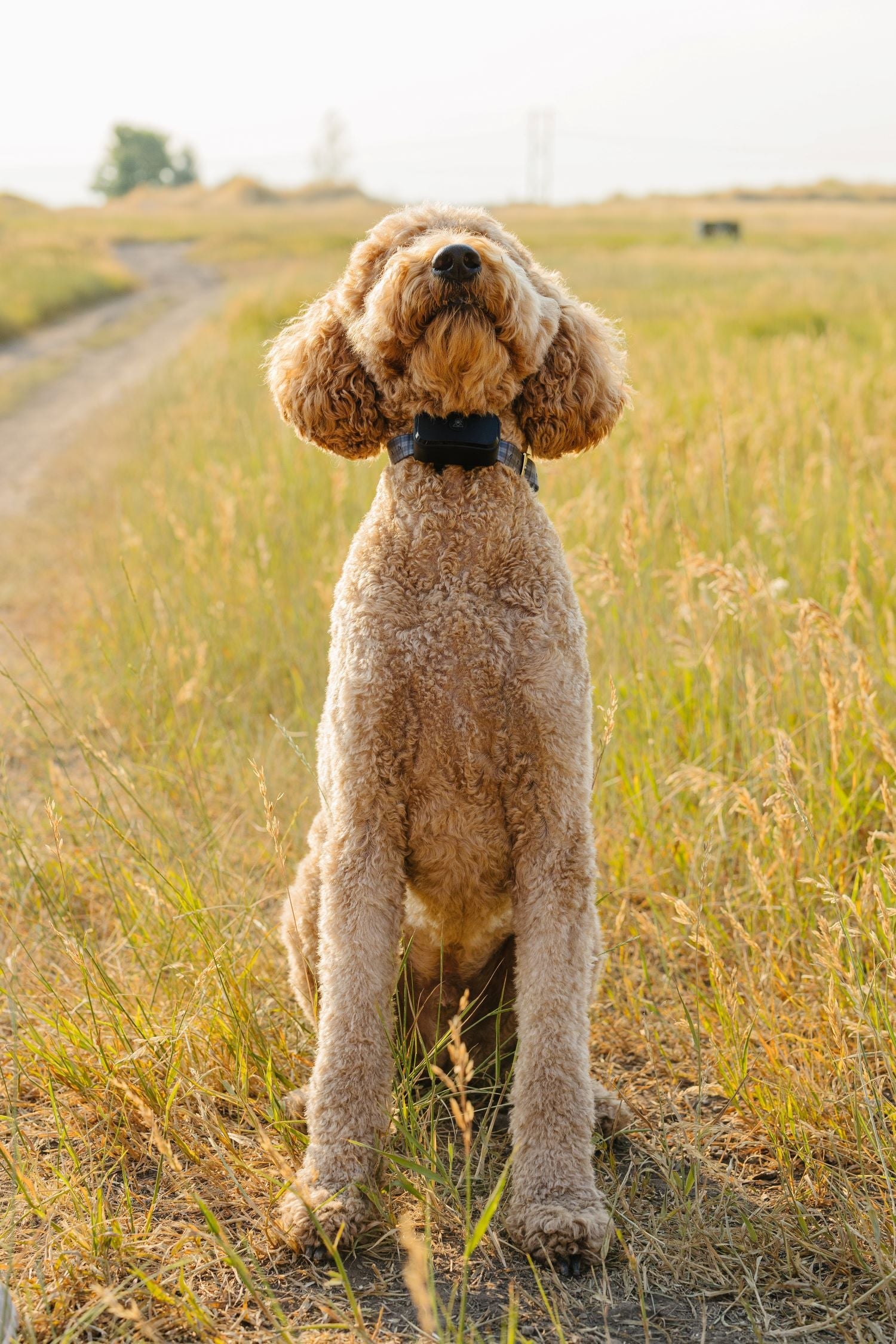GPS Collars for Hunting Dogs: Enhancing Safety in the Field
For hunters who’ve spent time out in the wild with their dogs, there’s no denying the unique bond that forms in the field. You trust your dog to sniff, chase, and bring things back. Most importantly, you trust them to come back safely. But if you've ever had your dog go after a deer or get lost in thick foliage, you know how stressful those times can be. That’s where GPS collars come in. They're not just cool gadgets. They are lifesavers in today's world that make every hunt safer and provide you an edge over your competition.
Let's talk about how GPS collars are making hunting dogs safer, how they operate, what to look for, and which brands are the best, especially those sold by trustworthy businesses like Pawtronic.
The Risks Hunting Dogs Face in the Wild
When you're hunting upland birds or big game, your dog is often off-leash and much ahead of you. That flexibility is necessary for performance, but it also has risks. A dog can get lost, chase the wrong animal, be hurt, or even go into dangerous places like cliffs, roadways, or private land. A research that came out in the Journal of Wildlife Management indicated that dogs that were more than 400 metres away from their handler were much more likely to get lost or hurt.
These hazards are real, not just ideas. During the season, thousands of hunting dogs go missing every year. This means that owners have to seek for days, worry, and sometimes even break their hearts. Thankfully, hunters are now more prepared than ever to keep their dogs safe—and within reach—thanks to the advancements in GPS technology, which has become more widely available and dependable.
How GPS Collars Work for Hunting Dogs
A GPS collar uses signals from satellites to find out where your dog is at any given time. Traditional radio telemetry systems simply tell you the distance and direction of an object and need a handheld receiver. GPS collars, on the other hand, show you the exact location on a screen, which is typically built into your smartphone.
Many advanced versions additionally have geofencing (virtual limits), alert notifications, and even training functions like correcting vibrations or tones. The real value lies in having eyes on your dog even when he’s out of sight.
Pawtronic’s GPS dog collars operate with high-accuracy tracking and no monthly subscription fees. Their collars are made to handle rough terrain, bad weather, and fast movement, which makes them great for serious hunting and field work.
Why GPS Collars Are Game-Changers for Hunting
Hunting isn't only about going after animals; it's also about having a plan, being disciplined, and trusting others. Your dog is helping you with this. The more you know about how he moves, the more control and insight you have while hunting.
You can do the following using a GPS collar:
You can always know where your dog is, even in thick woods or over great distances.
Set safe zones for your dog and get fast alerts if he goes off course.
To learn about trends and terrain coverage, keep track of movement history.
In an emergency (injury, weariness, disorientation), you can instantly find your dog.
With this amount of visibility, you have to organize the hunt in a different way. You don't have to guess or yell orders into the void anymore. You're using real-time information, which makes your outing safer and more successful.
A Closer Look at Pawtronic’s GPS Collar Systems
Pawtronic is known for making GPS Dog collar fence systems for pet owners, particularly hunters, that are reliable and easy to use. The Pawtronic Wireless GPS Dog Fence Collar is their best-selling item. It has precise GPS tracking, customized boundary settings, and built-in correction modes (sound, vibration, and static) to help you keep your dog safe and guide it.
The collar is waterproof, so it's great for hunting in rainy or marshy areas, and it has a wide signal range—up to 999 yards in open field circumstances. You can use it deep in the woods where there is no Wi-Fi or cell phone service. For people that hunt in isolated locations, that's a big deal.
Also, this GPS collar doesn't need monthly app subscriptions or hidden fees, so it's a good alternative for regular hunters who don't want to give either quality or usefulness.
Safety First: Real-Life Scenarios Where GPS Saves the Day
Imagine this: You're in the woods of Ontario, hunting birds with your pointer. One minute he's following a pheasant, and the next he's gone into thick undergrowth. You call. Nothing. You wait. Still nothing. Panic starts to set in.
With a GPS collar like the one offered by Pawtronic, all you have to do is open your device, check the coordinates, and walk directly to where your dog is. No yelling, no guessing. You get to him in a few minutes—muddy, thrilled, but safe.
Another example: Your dog crosses a line into private farmland or a deer zone where guns are being used. The collar sends an alert right away, and you may summon him back using a tone or vibration feature before things become worse.
In both cases, GPS technology makes a situation that may be dangerous into a moment of swift decision-making and recovery. It's not only about keeping an eye on things; it's also about stopping things from happening and responding to them.
Are GPS Collars Comfortable for Dogs?
One of the major worries for people who are buying GPS dog collars for the first time is if they will be too big or uncomfortable for their dogs. The good news is that modern GPS collars are made to be comfortable for dogs. Standard materials are lightweight, adaptable, and long-lasting.
For example, Pawtronic's collars have flexible straps and ergonomic designs that make sure the device doesn't get in the way of your dog's natural movement or stride. Hunters say that even active breeds like Vizslas and German Shorthaired Pointers grow used to wearing the collar quickly, and some even appear to embrace it as part of their "work gear."
Battery Life and Durability: Can It Handle a Full Day’s Hunt?
The battery life of your GPS dog collar tracker can make or break your experience. If the collar dies in the middle of the day, you won't be able to see anything. Depending on how you use them, Pawtronic's GPS collars can last for more than 20 hours on a single charge.
That's plenty for a whole day in the field. Also, it's easy and quick to recharge, usually done overnight so it's ready to go in the morning. If you're going on a journey that lasts more than one day, you should include a portable charger or a backup unit.
The collar housing is made to last through water, mud, bush, and very hot or cold weather. You may depend on it in both snow and wetlands. It was made for hunting in the real world, not simply in the backyard.
Training Integration: Combining GPS with Behavioral Reinforcement
A lot of hunters also utilize GPS collars to help them train their dogs. If your dog is still learning commands or recall behavior, the ability to buzz or sound a tone remotely can help reinforce boundaries without needing a leash.
Pawtronic collars have built-in modes that don't hurt but give gentle cues to help with this form of training. Over time, dogs learn to connect the sound or vibration with certain activities, such coming back, slowing down, or keeping within a certain range.
This is really helpful when you want to teach younger pups to work on their own but yet be under your control. GPS collars give you the feedback loop you need to change your dog's behavior even when you can't see him.
Hunters Speak: The Trust Factor
One big benefit that hunters who have switched to GPS tracking often talk about is trust. They have more faith in themselves since they feel they have the means to deal with emergencies. They trust their dogs more, so they let them do their jobs without having to see them all the time. And they trust the gear, especially when it comes from a business like Pawtronic that makes GPS gear for real-world application.
One experienced hunter said, "I was constantly worried before I had GPS. I kept asking myself, "Where's Duke?" even when things were going well. I just check my app and see he's 200 yards north, so I keep going. "Everything has changed."
The Bottom Line: GPS Collars Are No Longer Optional
GPS collars are not a luxury for modern hunting; they are a must-have. They make things safer, help with training, help with better hunt management, and boost your and your dog's confidence in the field. A GPS collar is your best bet whether you're hunting birds in Saskatchewan or hogs in the South.
Hunters can now get high-quality, inexpensive gear like the Pawtronic Wireless GPS Dog Fence Collar without having to worry about quality. Like your hunting dog, it's tough, precise, and made for the wild.
So the next time you gear up for a trip, ask yourself: is your dog equipped to find the trail and come back safely? If not, maybe it's time to believe in GPS. Every second and every step counts when you're hunting.




Leave a comment
This site is protected by hCaptcha and the hCaptcha Privacy Policy and Terms of Service apply.